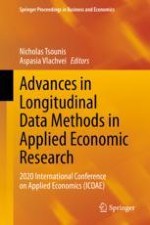2021 | OriginalPaper | Buchkapitel
CO2 Emissions, Energy Consumption, Economic Growth, Trade, and Urbanization in Greece
verfasst von : Pavlos Stamatiou, Chaido Dritsaki, Dimitrios Niklis
Erschienen in: Advances in Longitudinal Data Methods in Applied Economic Research
Aktivieren Sie unsere intelligente Suche, um passende Fachinhalte oder Patente zu finden.
Wählen Sie Textabschnitte aus um mit Künstlicher Intelligenz passenden Patente zu finden. powered by
Markieren Sie Textabschnitte, um KI-gestützt weitere passende Inhalte zu finden. powered by
